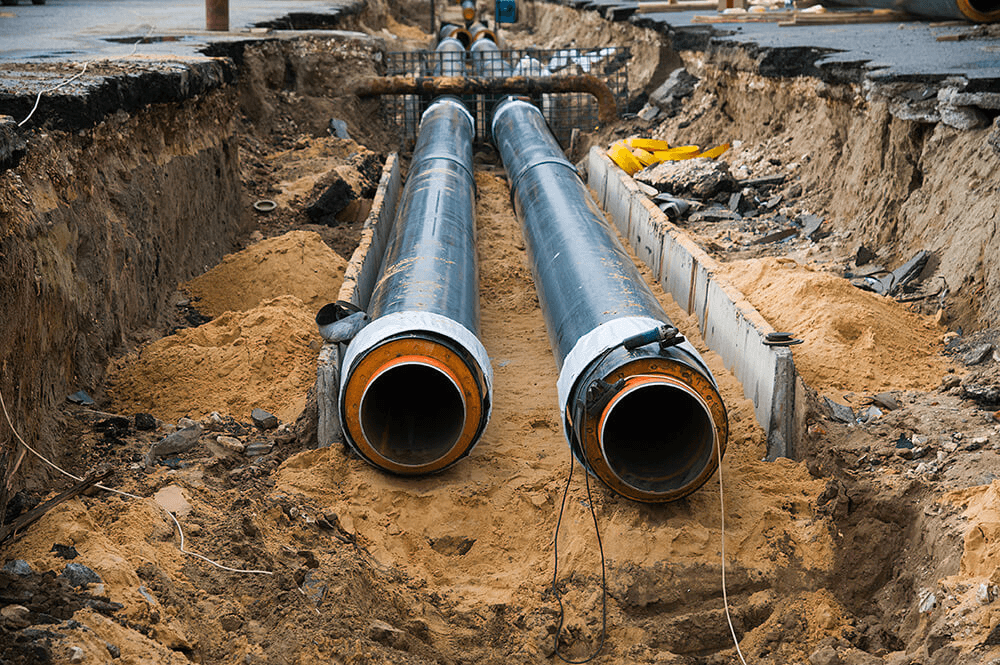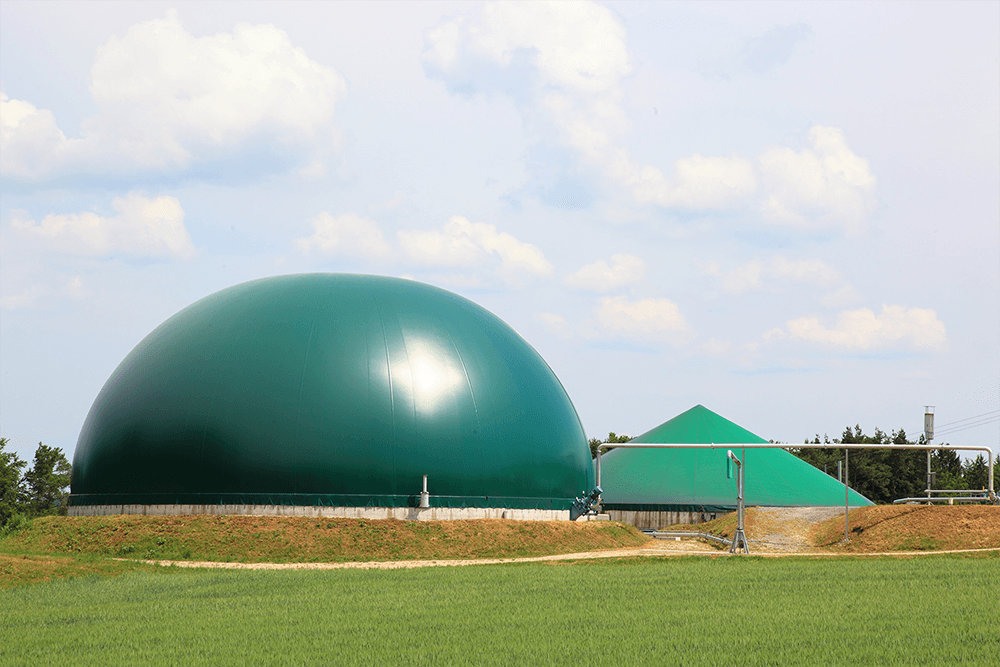A District Heating Network, also referred to as a Heat Network or Community Heating, provides heating and hot water to a specific area from a single source of heat supply. The size of a Heating Network can vary, from a small number of buildings through to an entire town or even a city. A Heating Network will often contain domestic, commercial and public buildings.
A District Heating Network will consist of 4 primary, essential components:
- A Single Heat Source, usually comprising of an Energy Centre or Plant Room.
- The Heat Network Route, comprising of Pipework that transfers the heat underground.
- Heat Interface Units or HIU’s, these units extract heat from within the District Heating Network into individual dwellings and buildings.
- Consumers – the end user can heat their home or building and can access hot water.
A Quick History of District Heating
One of the very first uses of Geothermal District Heating was actually in Pompei in the 14th Century. However, the first direct use of a Geothermal District Heating System created to access a hot water resource was developed in the US, in 1892. Water was routed to homes and businesses using a wooden pipeline, creating the first Geothermal District Heating Network.
In the UK, it wasn’t until the 1950’s when Pimlico introduced the very first, true, district heating network. At the time, the network connected over 1,600 council homes using the waste generated by the iconic Battersea Power Station. This Network is still operational today, heating over 3,500 homes, 5 business premises and 3 schools.
The largest District Heating Network in the UK today is based in Nottinghamshire. It provides heat to over 4,500 homes and an array of commercial properties and famous landmarks.
What is a Heat Interface Unit (HIU)
Instead of each dwelling having its own boiler installed, the Heat Interface Unit (HIU) replaces the requirement for an individual boiler to provide heating and hot water. A HIU is installed within each dwelling that’s connected to the District Heating Network.
Each HIU is connected to the energy centre within the network, which in turn supplies the heating and hot water via the HIU to each dwelling. The end user is also able to control the heating and hot water via their own HIU.
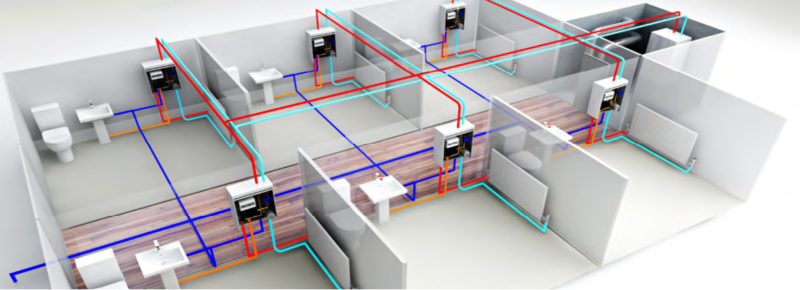
Combined Heat and Power (CHP)
CHP is the highly efficient process of generating both electricity and heat at the same time. The heat that is created when electricity is generated is often wasted, by using a CHP unit, the heat is captured and used to provide thermal energy, such as hot water.
CHP is an effective and efficient option, providing benefits such as reducing carbon emissions and operating costs. The results can be seen from this case study snippet taken from Centrica Business Solutions:
‘Centrica Business Solutions and its team of engineers installed CHP units at 13 Places Leisure facilities. Since installing the CHP units, Places Leisure has reduced its carbon emissions by 2,600 tonnes, which is equivalent to taking 510 cars off the road for a year. The CHP units are also saving the business £250,000 per year in operating costs.’
Who are the major players in the UK

The parent company, Vattenfall AB, is 100% owned by the Swedish state, and its headquarters are in Solna, Sweden. Learn more here

Learn more here


Associations and Memberships
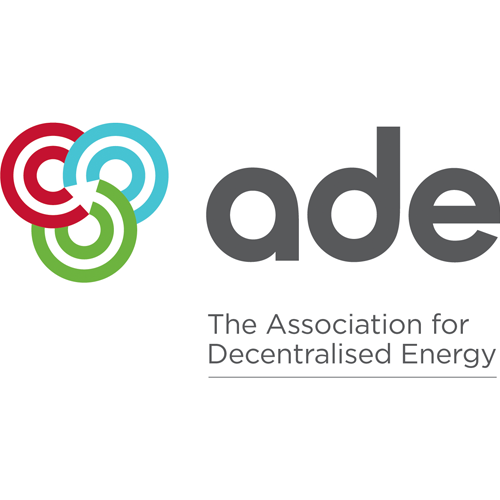
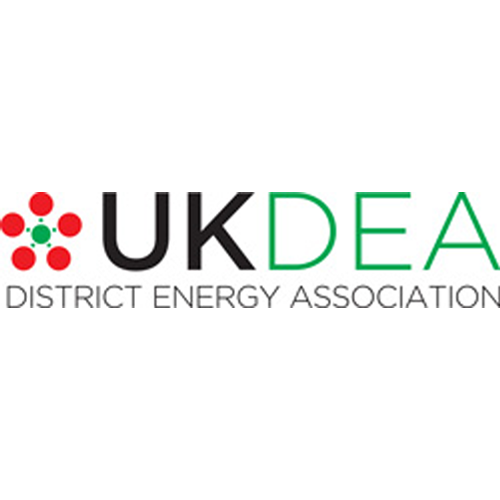

Low carbon heat networks are changing the way we heat our homes. They are set to play a key role in meeting carbon reduction targets and helping to create a sustainable energy future.
Learn more here
UK District Heating Network Installations Map
What does the future look like for District Heating?
The future of District Heating sits firmly with utilising renewables to drive down carbon emissions. Several countries and governments around the world are committing to ambitious net-zero targets, whilst contending with a growing demand for energy – a direct result of a rising population and housing demands. For the UK, our government has committed to a “net-zero” emissions target by 2050.
Net-zero commitments and timeframes will force technological innovation and growth within the energy sector. At Rapid Energy, we envision the District Heating Network key players and Energy Service Company’s (ESCOs) playing a major role in achieving zero carbon energy.

District Heating Networks provide an efficient way of consuming energy. They also provide lower energy costs for the end user and have environmental benefits. Some networks even use a renewable energy centre as their energy source, utilising waste destined for landfill and converting it into clean energy for its end users.
Another really promising sustainable solution is the use of Hydrogen. Some of the big names in the industry are investing heavily in Hydrogen technology as part of their commitment to sustainability. Some of the benefits of Hydrogen include:
- Unlimited availability and generation
- Reduction of emissions and environmental degradation
To learn more about how Hydrogen is being used as a sustainable energy source, E.on have produced some really informative content that covers this topic in more detail: https://www.eon.com/en/business-customers/hydrogen-rediscovery-of-the-oldest-element.html.
How Rapid Energy supports District Heating Networks
Service recovery and contingency plans
To minimise the duration of heating and hot water loss, Rapid Energy can produce a service recovery and contingency plan for its District Heating Network clients. Our engineers conduct a comprehensive site survey, detailing specific requirements for a temporary boiler solution. This includes the siting of the packaged boiler, access required, power requirements, connections required in existing pipework and full contact details and escalation process.
Our plans are split into 3 different levels, with levels 2 and 3 including the reservation of your required, specified packaged boiler plant for an agreed period of time (minimum 6 month reservation period).
To learn more about our service recovery plans, click here.
Industry Leading Response Times
Existing clients of Rapid Energy enjoy industry leading response times. And with a service recovery plan in place, we can implement an SLA which will contain specific response times tailored to your business. In an emergency, we aim to have one of our engineers or representatives onsite within 2 hours of receiving a call. Here’s a review from one of our existing clients:
Great service very professional
The Southbank Centre – London
Great service very professional and incredibly quick, first survey same day and units delivered quickly. Communication during period of hire regarding operation and fuel very helpful. I would highly recommend
Temporary boiler hire during the construction phase
In some cases, a network can be constructed way in advance of the associated Energy Centre being commissioned. Rapid Energy can provide temporary boilers to compensate for a scenario like this. Our packaged plant rooms reach a capacity of 2000kW and our fleet is large enough to service any requirement and capacity.
Remote Monitoring and Fuel Visibility
All of our packaged boilers come equipped with BMS, providing complete visibility on our equipment’s performance and vitals. Our team monitors our packaged boilers 24/7. Our boilers can be restarted remotely and if there’s a problem, our operations team can usually diagnose the issue and resolve it from our HQ. This saves our customers valuable time and costs, especially if there are financial implications due to heating and hot water loss.
Mitigating heating and hot water downtime is crucial for residents and energy providers alike. BMS & remote monitoring plays a key role in our service offering and value proposition to District Energy partners.
If you have any questions, or would like to discuss our temporary heating and hot water solutions, call us today on 0800 464 7025 or complete the form below to arrange a callback.
